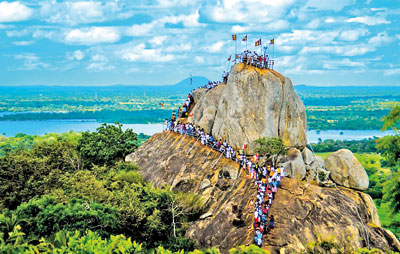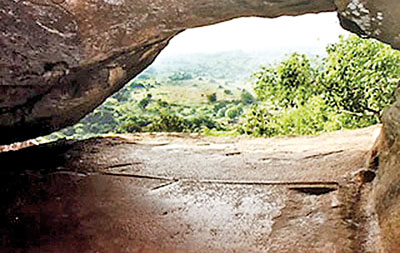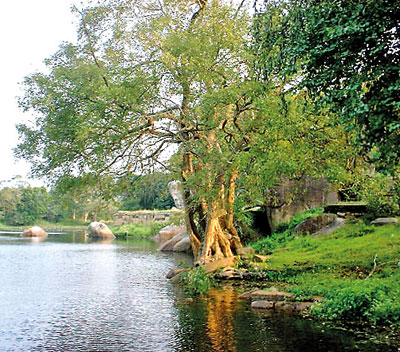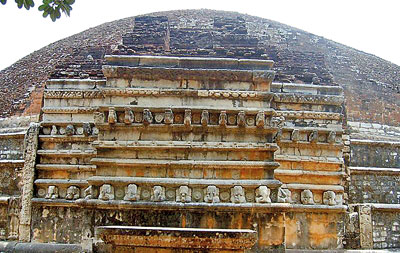Celebrating Poson Poya
View(s):
Aaradhana Gala - Mihintale
Once a year, Anuradhapura, the ancient capital of Sri Lanka, attracts huge crowds – possibly in millions – to commemorate Poson Poya – the full moon day when Arahant Mahinda introduced Buddhism to Sri Lanka. The pilgrims first go to Mihintale, eight miles (12.8 km) off Anuradhapura, worship at ‘Aaradhana gala’ – the place where Arahant Mahinda arrived to introduce Buddhism to Sri Lanka and visit the sites occupied by him.
The incident happened in the 3rd century B.C., when the Sinhalese monarch, King Devanampiya Tissa was ruling from Anuradhapura.
The king was out hunting, when Arahant Mahinda arrived and called the king by name.
Surprised that he was being addressed by his name, when no citizen in the country dared do so, he saw five persons in yellow robes at the topmost rock in Mihintale.
They came down and met the king and in the first few words they exchanged, Arahant Mahinda was convinced that the king was capable of understanding the Dhamma.
It was Poson Poya Day.
Arahant Mahinda then delivered a Dhamma sermon based on the ‘Chulahaththipadopama Sutta’ which contained almost all the principal teachings of the Buddha. The king and his retinue having listened to the sermon were greatly satisfied and embraced Buddhism.

Mihindu Guhawa
The following morning Arahant Mahinda came to Anuradhapura city on the invitation of the king. He was offered the royal pavilion in the Mahamegha Park (Mahamevuna Uyana) from where he delivered sermons for several days. Thousands of men and women gladly accepted the faith. To this day the greenery in the park takes you through a serene area from where one or two dagobas can be spotted in the distance.
With the ‘vassana’ (vas) – rainy season approaching, the king arranged for Arahant Mahinda and the other monks to spend the time in a quiet environment in Mihintale. The cave where Arahant Mahinda stayed in, is kept intact to this day where the pilgrims can visit and see what a beautiful surrounding area can be seen from it.
Mihintale has several places to visit.
The long line of steps to go up to the pilgrim’s area with ‘araliya’ trees on either side providing the shade, is easy to climb, and not steep. After climbing the steps the pilgrims can look around and decide from which way to start visiting the sites.
Apart from the ‘Ambastala Cetiya’ indicating the place where Arahant Mahinda and the king had a lengthy dialogue, is the ‘Kantaka Cetiya’ built at a later date although the exact period is not known. The detailed decorative ‘Vahalkada’ – frontispiece of the ‘Kantaka Cetiya’ indicates that the cetiya had been built when the local art and sculpture had developed.
Pilgrims can also visit several ponds from where water had been obtained at the time. Roaming around, one can see many ruins that indicate that the whole area had been full of places of worship.

Kaludiya Pokuna

Vahalkada of the Kantaka Cetiya


